There are various standards of thread systems that manufacturers worldwide follow when producing threaded components like screws, nuts, bolts, fixtures, pipes, and other threaded machines. One of which is the British Standard Pipe (BSP)— a thread standard widely used internationally for plumbing and pipe-fitting applications, except in North America where a different standard called the National Pipe Thread (NPT) predominates.
BSP Thread Characteristics
BSP is a standard that defines thread measurements and geometry based on the Whitworth thread form— the first national screw thread standard in the world, developed by Joseph Whitworth in 1841.
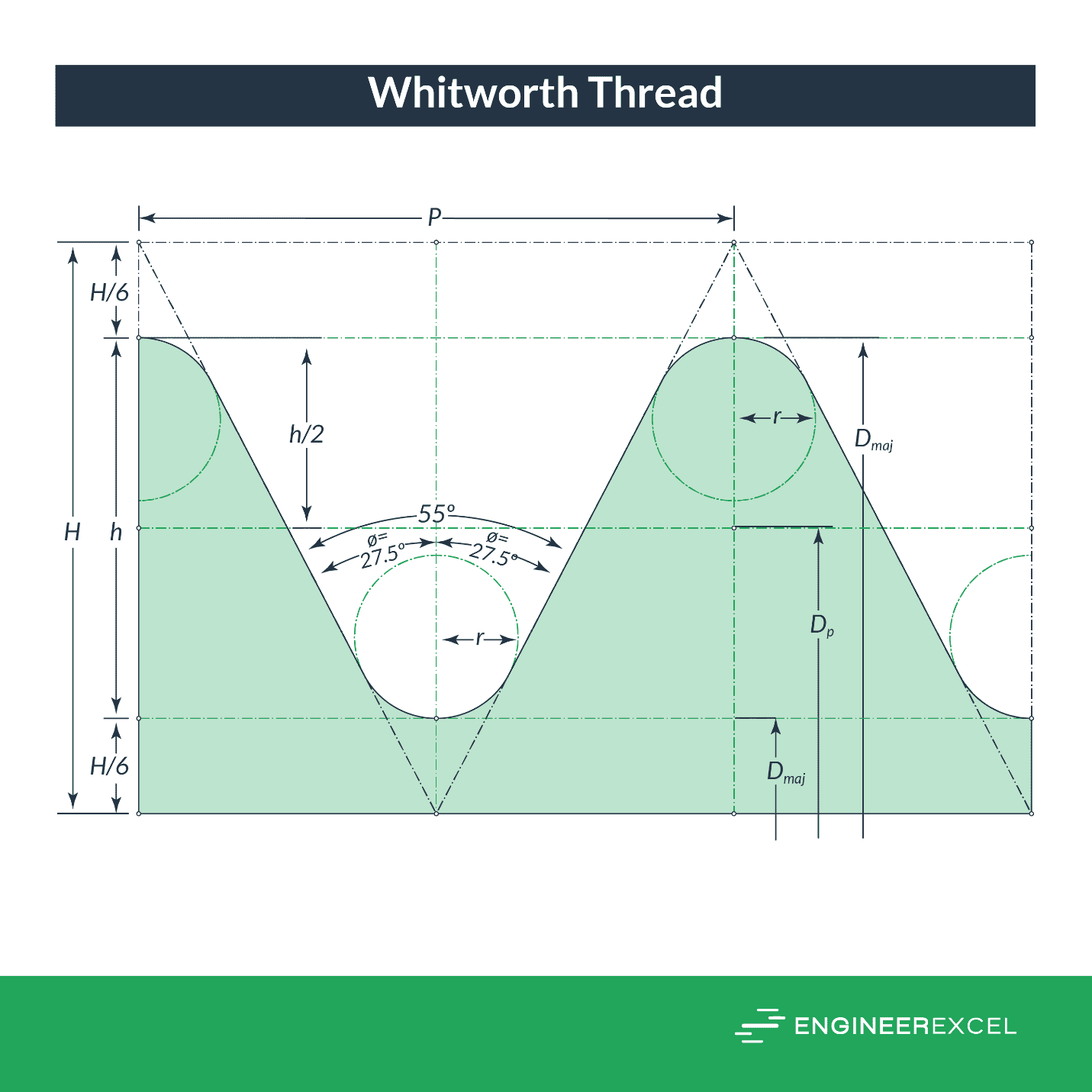
A Whitworth thread assumes a symmetrical V-thread with a thread angle of 55° and a flank angle of 27.5° from the axial plane. As shown in the diagram above, this creates an imaginary symmetrical triangle with a base length equal to the thread pitch and a height equal to:


Elevate Your Engineering With Excel
Advance in Excel with engineering-focused training that equips you with the skills to streamline projects and accelerate your career.
Where:
- H = height of the imaginary triangle [mm or in]
- p = thread pitch [mm or in]
- θ = flank angle [deg]
However, the top and bottom 1/6 of this imaginary triangle is cut off, making the actual depth of thread equal to:

Where:
- h = actual depth of thread [mm or in]
The crests and roots are further rounded equally with a 125° circular arc with a radius of 0.1373p and a height of 0.0739p.
Formally, BSP is defined by the ISO 7 standard for pipe threads where pressure-tight joints are made on the threads, and by the ISO 228 standard for pipe threads where pressure-tight joints are not made on the threads.
Types of BSP Threads
Based on the overall shape of the geometric profile, BSP threads can be categorized into two main types: parallel (BSPP) and tapered (BSPT). As the name suggests, BSPP threads have a parallel uniform diameter along their entire length, while BSPT threads have a tapered diameter from one end to another that tapers at a degree of 1 inch per 16 inches.
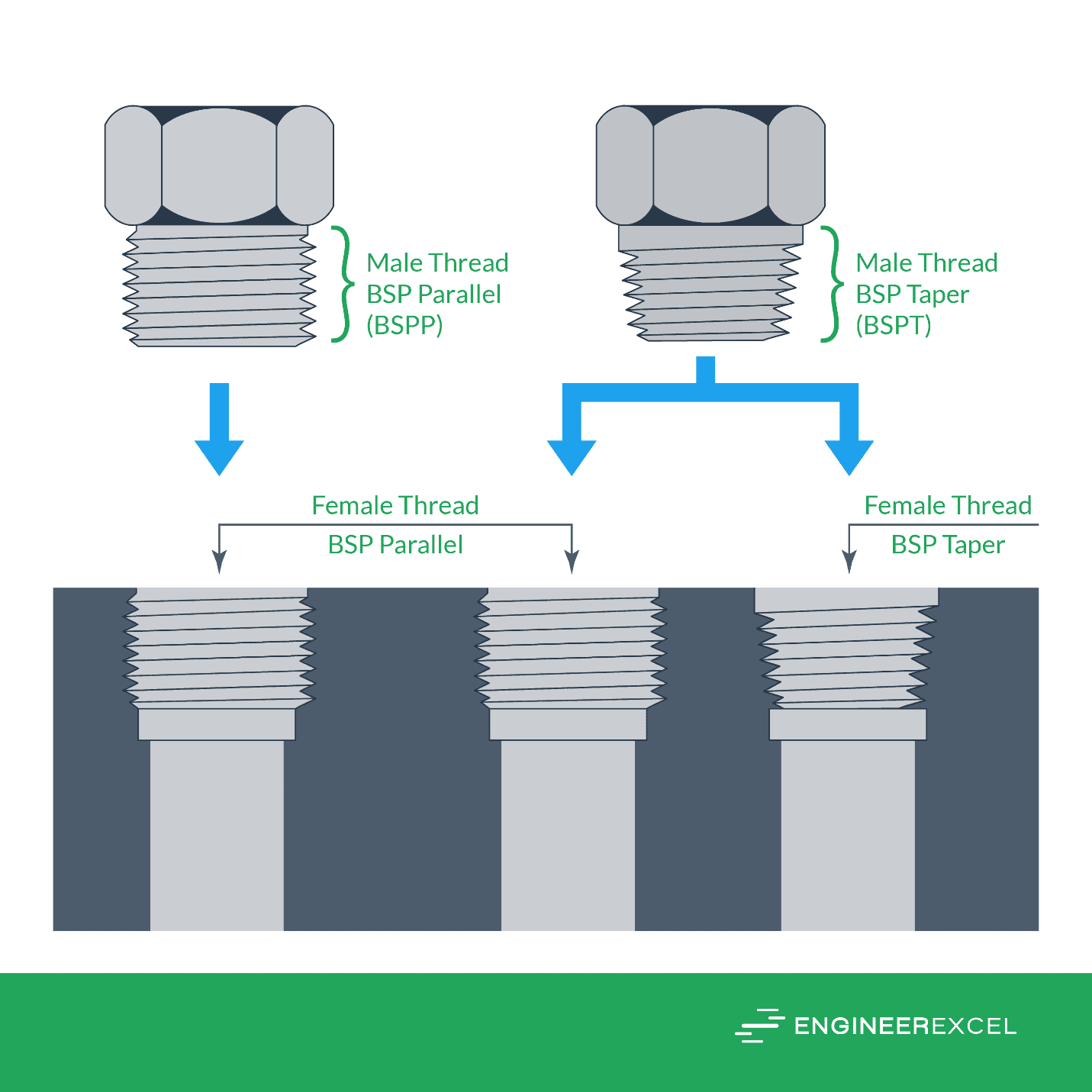
Both types are available in a range of sizes for both external (male) and internal (female) threads. As shown in the diagram above, a BSPT male thread can be made compatible with either a BSPT or a BSPP female thread of the same size. However, a BSPP male thread can only be made compatible with a BSPP female thread of the same size.
Unless otherwise specified, threads are normally assumed to be right-handed. That means it gets tightened into the nut when it rotates in the clockwise direction.
Parallel BSP Thread (BSPP)
In the ISO:228-1:2000 standard, BSPP male and female threads are generally referred to as the G-series threads— G meaning “gas” as these threads were originally designed for gas applications. However, it is important to note that Rp-series threads, defined in ISO:7-1:1994, are also considered BSPP female threads. The difference is that the G-series female thread is not intended for a seal being created on the thread itself, whereas the Rp-series female thread is specifically designed to create a seal when mated with an R-series tapered male thread.
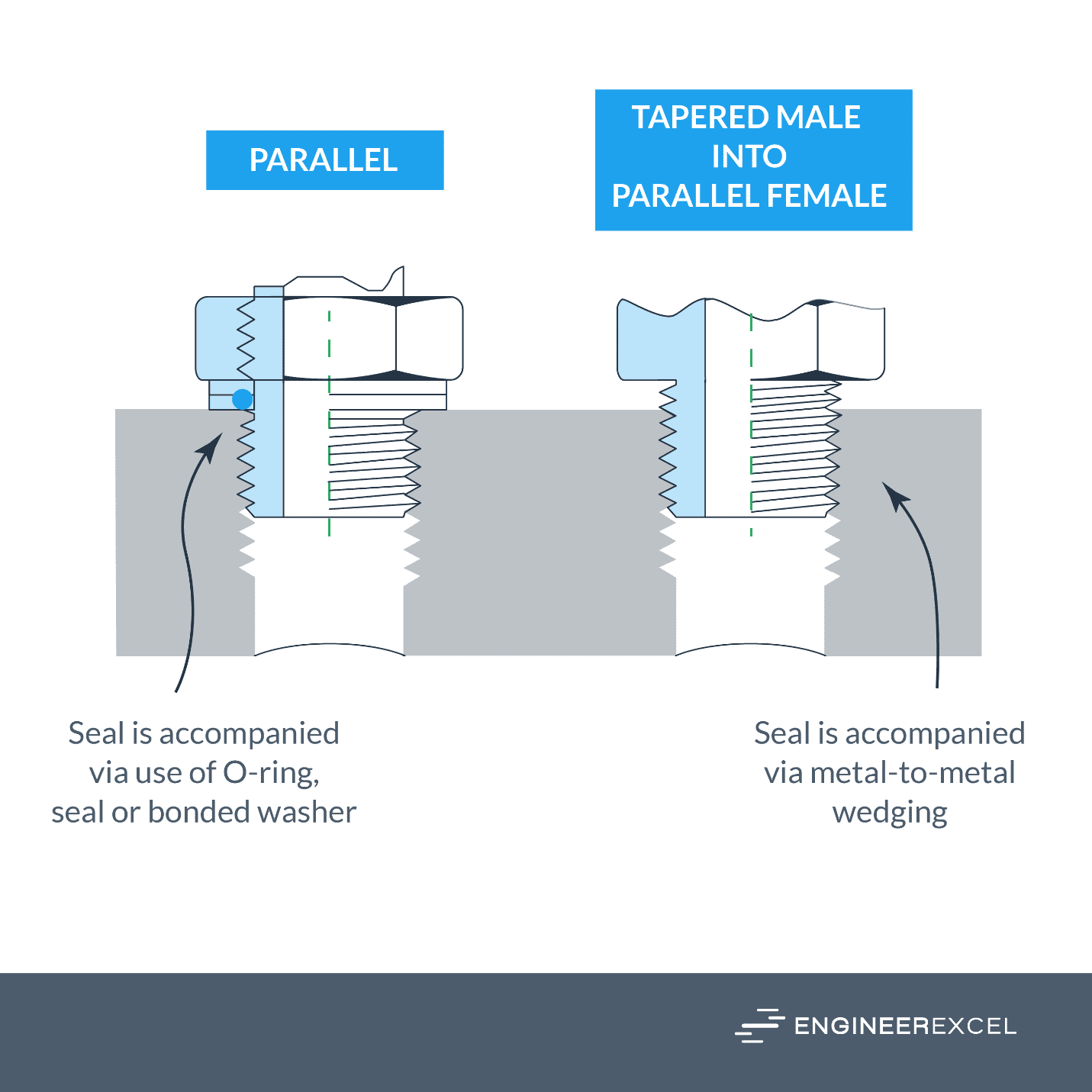
G-series parallel thread fittings normally accomplish a pressure-tight seal using an O-ring or a bonded washer. This is often made of an elastomeric material and is pressed between the shoulder of the male and the face of the female fitting, as shown in the diagram above. The cone-shaped seat is crucial for achieving a leak-free seal as this type of sealing does not require thread sealants to form an excellent connection.
Tapered BSP Thread (BSPT)
On the other hand, BSPT threads are generally referred to as R- and Rc-series threads— R meaning “rohr” which is the German word for pipe. They are defined in the ISO:7-1:1994 standard.
In particular, R-series refers to taper external pipe threads, while Rc-series refers to taper internal pipe threads.
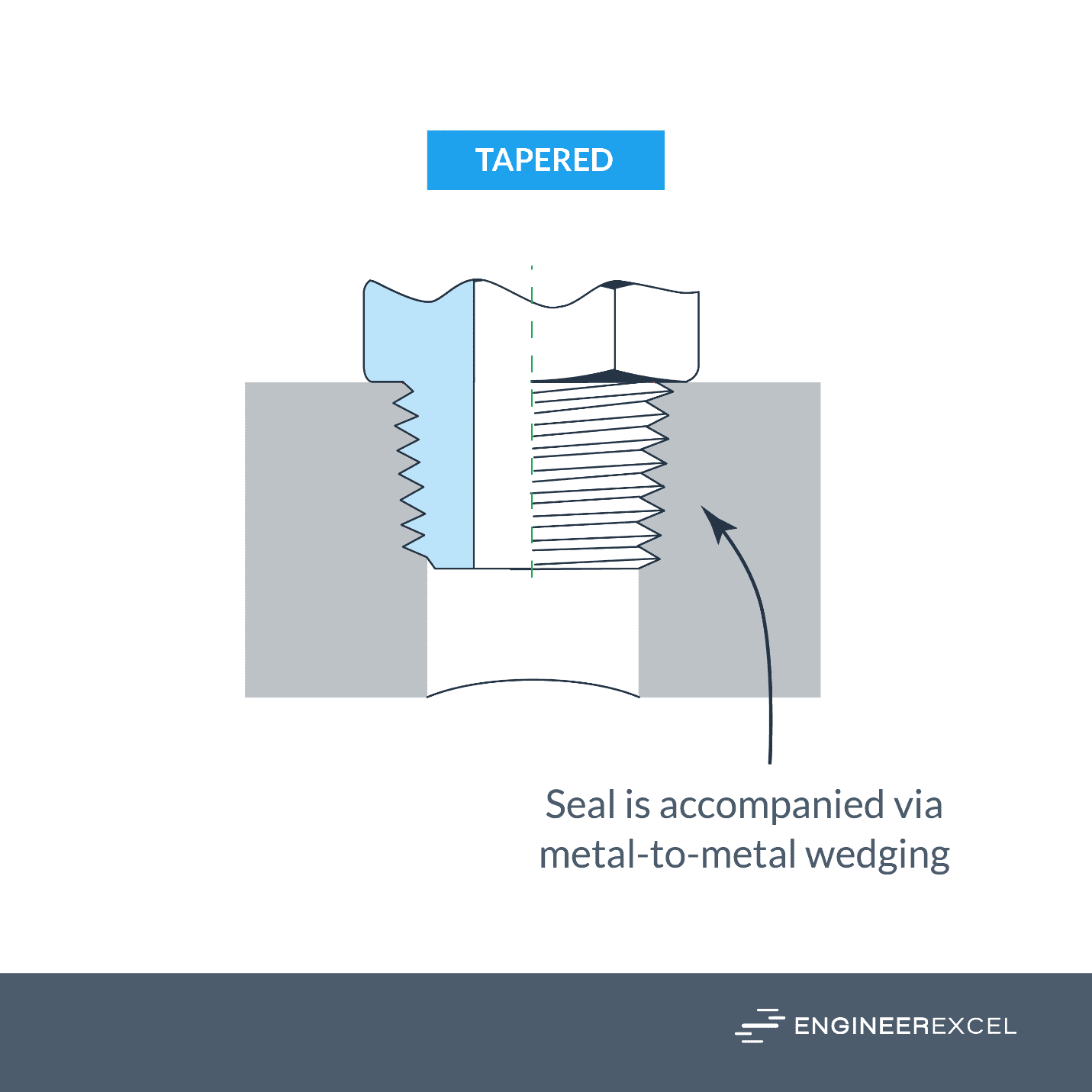
As shown in the diagram above, tapered threads generally accomplish seals via metal-to-metal wedging of the thread material. Instead of an O-ring or a bonded washer, these fittings need a lubricant or sealant to form a pressure-tight joint.
Per ISO 7 standard, R-series threads are designed to mate with both Rc- and Rp-series threads, however, they can also be mated with the G-series female threads.
BSP Thread Sizes
BSP threads come in a range of sizes designated by their nominal size and thread type.
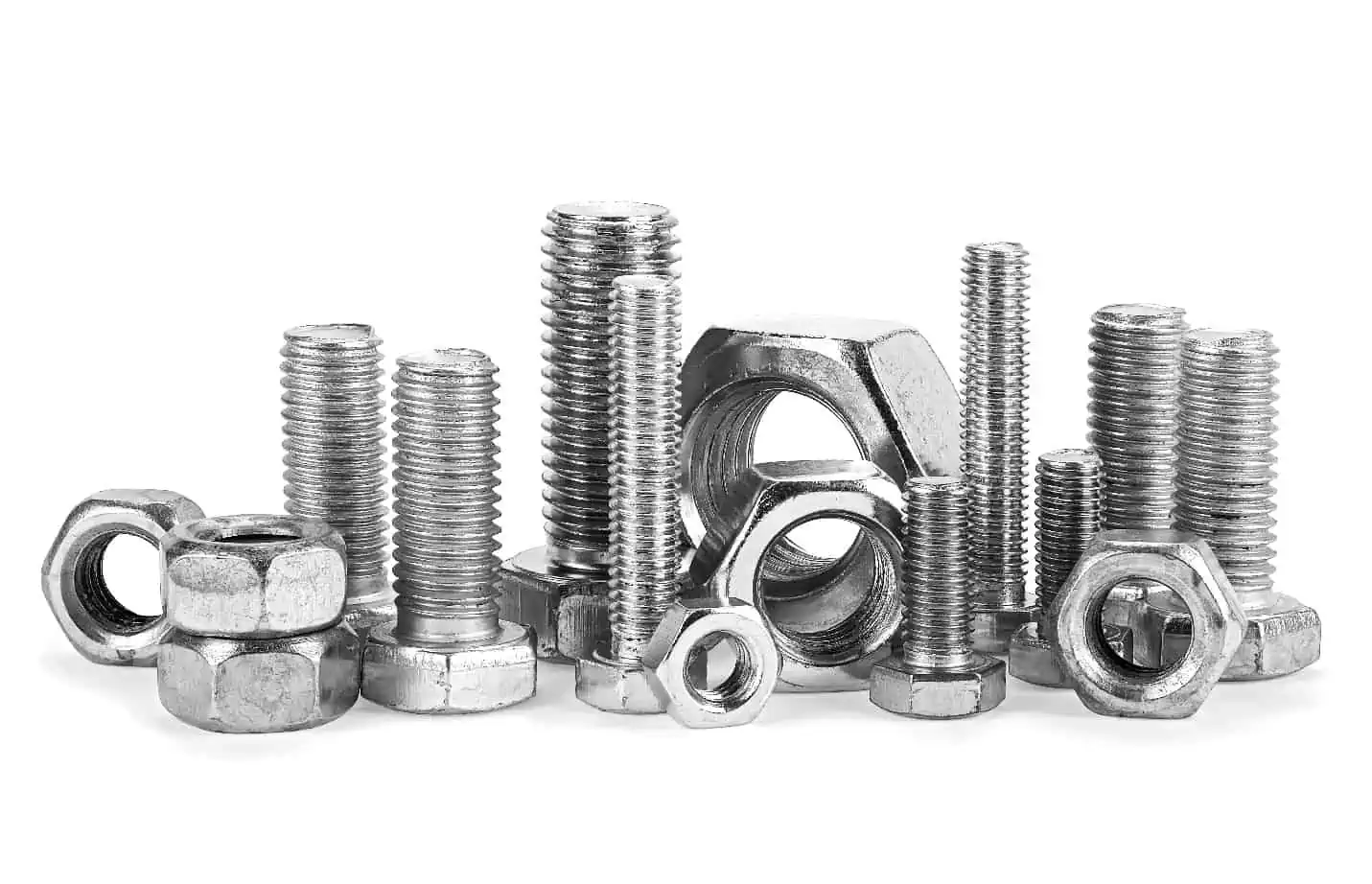
The original definition of thread size was based on the inner diameter of a suitable steel tube. However, modern pipes use thinner walls to conserve material, resulting in a larger inner diameter than the nominal size. In the current metric standard, the size designation is simply an approximate number that does not refer to any of the thread diameters.
G-Series Threads
The table shows the 24 thread sizes, from 1/16 to 6, for G-series threads defined in the ISO 228 standard:
In the table above:
- D = major diameter for an internal thread [mm]
- D1 = minor diameter for an internal thread [mm]
- D2 = pitch diameter for an internal thread [mm]
- d = major diameter for an external thread [mm]
- d1 = minor diameter for an external thread [mm]
- d2 = pitch diameter for an external thread [mm]
- h = height of the thread profile with rounded crests and roots [mm]
- P = pitch [mm]
R-Series Threads
The table below shows the 15 thread sizes, from 1/16 to 6, for R-series threads defined in the ISO 7 standard:
For R-series threads, the major, pitch, and minor diameters are measured at the gauge plane. For external threads, this plane is located at a distance equal to the nominal gauge length from the small end of the thread; while for internal threads, it is located at a distance equal to half the pitch behind the face of the threaded part. This is to give allowance for chamfering.
BSP Thread Denomination
Specifying a standard BSP thread size normally follows the following format:
“Pipe thread” + thread standard + type of thread + designation of thread size
The thread standard can either be ISO 228 or ISO 7. The type of thread can either be G for external and internal parallel threads based on ISO 228, R for external taper, Rc for internal taper, and Rp for internal. The designation of thread size can be found on the first column of the size tables above.
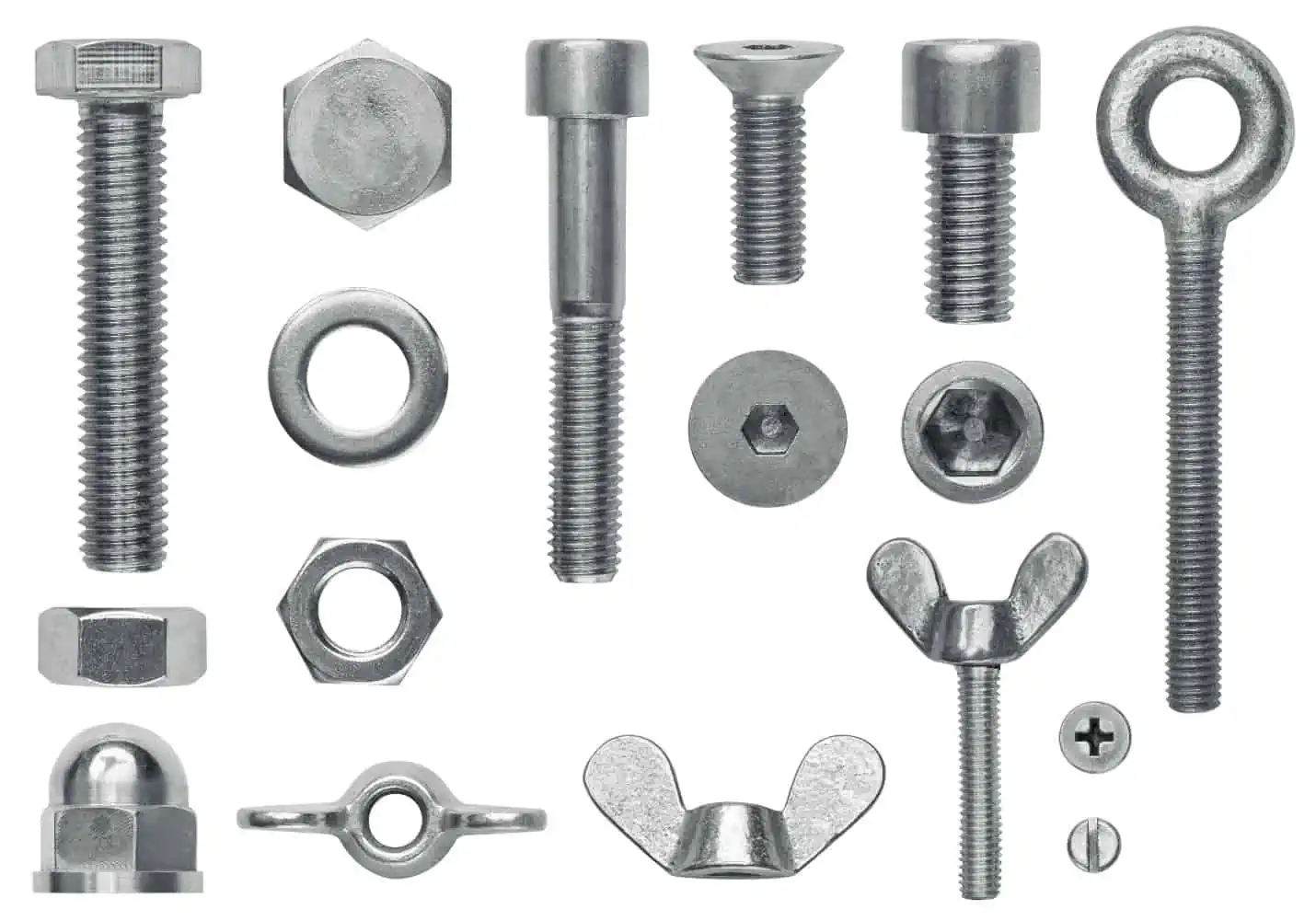
Threads are normally right-handed. However, for left-handed threads, LH should be appended at the end of the denomination.
For example:
- “Pipe thread ISO 7 Rc 1⁄2” specifies an internal taper thread with a thread size designation of ½
- “Pipe thread ISO 228 G ¼ LH” specifies left-handed parallel threads with a size designation of 1/4
Applications
BSP threads are commonly used worldwide in water supply, cooling, pneumatics, and hydraulic systems. BSPP threads, specifically, are used on hose ends, adapters, ports, and other high-pressure applications.
These threads are a versatile choice for various projects as they are compatible with a wide range of materials, including brass, stainless steel, and plastic.
BSPT vs NPT Threads
NPT, short for National Pipe Thread, is a taper thread standard commonly used in North America. It is similar to BSPT threads in the sense that they are both used to define taper threads. However, they are not interchangeable.
The main difference between the two is their taper angle and thread form. BSPT threads have a taper angle of 1:16 and a thread angle of 55°, while NPT threads have a taper angle of 1:14 and a thread angle of 60°. Moreover, BSPT threads have a rounded crest and root, while NPT threads have a flattened crest and root.
However, BSPT can be converted to NPT threads, and vice versa. This can be done if it is necessary to connect pipes and fittings from different countries that use different standards, say the United States and Australia. This can be achieved through the use of adapters or by re-tapping the threads.
Adapters are readily available two-way threaded components whose one side is tapped with NPT threads while the other is tapped with BSPT threads. They come in various shapes and sizes, providing a convenient solution for converting between the two thread types. On the other hand, re-tapping requires specialized tools and should only be performed by professional toolmakers.
Regardless of the method, the ability to convert between BSPT and NPT threads increases the versatility of plumbing systems, making it possible to seamlessly integrate components from one standard to another.
